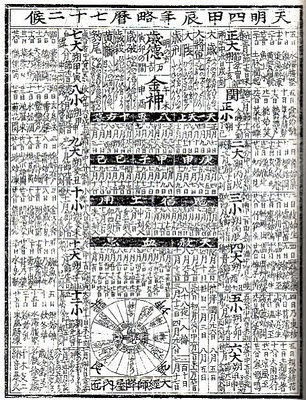TOP of this SAIJIKI
::::::::::::::::::::::::::::::::::::::::::::::::::::::::::::::::::::::::::::::::::::::::::::::::::::
SAIJIKI - NEW YEAR
HUMANITY
:::::::::::::::::::::::::::::::::::::::::::::::::::::::::::::::::::::::::::::::::::::::::::::::::::
quote
Andrew Maerkle, Spring Exhibitions
Japan Times Feb. 2010
Seasons play an important role in Japanese culture, which has long celebrated the appreciation of ephemeral beauty as a reflection of life itself. One of the most important seasons in Japan is New Year's, a time for families to gather and celebrate with several days of elaborate feasts. Traditionally, this holiday fell between late January and mid-February and led directly into spring, until Japan adopted the Gregorian calendar in 1873.
Vestiges of this tradition, however, remain apparent in salutations such as "new spring" (shinshun) and "welcome spring" (geishun), somewhat incongruous as they are now written on New Year's cards sent in mid-winter.
"Hospitality and the History of the Banquet"
. Seasonal Hospitality and Shitsurai
:::::::::::::::::::::::::::::::::::::::::::::::::::::::::::::::::::::::::::::::::::::::::::::::::::
New Year (shinnen, shin nen) Worldwide
New Year's Day (ganjitsu) Japan
nenshi 年始 (ねんし) new year begins
visitors for the New Year
. First Things done at the New Year
a KIGO LIST
Mostly kigo words starting with HATSU (first) in Japanese.
..... hatsu kukai 初句会 first haiku meeting
Arrow for the New Year 破魔矢 hamaya
hamayumi 破魔弓 (はまゆみ) bow for the New Year
To ward off evil influence.
Dream
First Dream (hatsu yume, Japan)
Decorations (kazari 飾)
in the home and garden
. ..... o-kazari お飾 (おかざり) New Year's decoration
kadomatsu, ebikazari, saiwaigi, shimenawa, shoochikubai kazaru and many more
"Cocoon ball decorations" 繭玉 mayudama
for the deity of the silk worms
bendai 紅鯛 "red Tai"
sasa bendai 笹紅鯛(ささべんだい)
sea bream decoration
:::::::::::::::::::::::::::::::::::::::::::::::::::::::::::::::::::::::::::::::::::::::::::::::::::
FOOD ... New Year's Food ... KIGO LIST
(osetchi ryoori おせち料理, 御節料理)
toso iwau 屠蘇祝う(とそいわう)celebrating with spiced ricewine
Pounding Rice (mochi tsuki)
.... New Year's Rice Dumplings (toshi no mochi, kagamimochi, zoonimochi) and a few more..... The Hare/Rabbit in the Moon
Soup New Year's Soup (zooni)
Tea New Year's Tea, Good Luck Tea, lucky tea (fukucha) Japan
"snow-nori" 雪海苔 (yukinori) laver seaweed
hatsu nori 初海苔, ichiban nori 一番海苔
Chopsticks
iwaibashi 祝箸(いわいばし)"festive chopsticks"
yanagibashi 柳箸(やなぎばし)chopsticks from willow wood
and many more
:::::::::::::::::::::::::::::::::::::::::::::::::::::::::::::::::::::::::::::::::::::::::::::::::::

. Games and Toys
for the New Year
temari, kemari, hagoita, karuta, toosenkyoo, fuku-warai, juuroku musashi, koma, sugoroku
:::::::::::::::::::::::::::::::::::::::::::::::::::::::::::::::::::::::::::::::::::::::::::::::::::
Manzai (New Year's Comic Performance)
hatsuseki, hatsu seki 初席 はつせき "first seat"
..... hatsu yose 初寄席(はつよせ)
..... katarizome 語初(かたりぞめ)first talk (of rakugo)
. New Year ... auspicious performances
puppeteers and more
Money for the New Year (o-toshidama お年玉(おとしだま)
Party to welcome the New Year 新年会 (しんねんかい) shinnenkai
Postcards for the New Year (nengajoo)
. . . . . kesoobumi uri 懸想文売 vendor of love letters
. Promotion Day for Court Ladies
ooroku 女王禄 (おうろく)
ooroku o tamou 女王禄を賜う(おうろくをたもう)
nyo joi 女叙位 (にょじょい)
onna joi 女叙位(おんなじょい)
. Salt market at Matsumoto
Tea ceremony and the New Year 初茶湯(はつちゃのゆ)hatsu chanoyu
hatsugama 初釜 "First use of the kettle"
Visitors during the New Year
gakyaku 賀客(がきゃく)
. Work and Business begins
first deals, first bargains, first bookkeeping and more
:::::::::::::::::::::::::::::::::::::::::::::::::::::::::::::::::::::::::::::::::::::::::::::::::::
Alphabetical List (Japanese kigo)
baku-makura 獏枕 tapir-pillow for the First Dream
kake mushiro 掛筵 (かけむしろ) new portable straw mat
and more straw-mat kigo
toshigi としぎ (年木/歳木) "firewood for the New Year"
oniuchigi, oni uchigi 鬼打木 (おにうちぎ)
firewood to ward off the demons
MAI 舞 ...
Dances as ritual offerings to the deities
niwa kamado 庭竈 (にわかまど) cooking stove in the garden
hatsu kamado 初竈 (はつかまど)first use of the hearth fire
takarabune 宝船 (たからぶね) Treasure Ship
takarabune shiku 宝船敷く(たからぶねしく)placing a treasure ship (under the pillow)
..... takarabune shiki ne 宝船敷き寝(たからぶねしきね)
takarabune uri 宝船売(たからぶねうり)
vendor of treasure ships
:::::::::::::::::::::::::::::::::::::::::::::::::::::::::::::::::::::::::::::::::::::::::::::::::::::
. Preparations for the New Year
made during December
. FIRST THINGS done at the New Year
:::::::::::::::::::::::::::::::::::::::::::::::::::::::::::::::::::::::::::::::::::::::::::::::::::::::::::::::::::::::::::

. Join the friends on facebook ! .
:::::::::::::::::::::::::::::::::::::::::::::::::::::::::::::::::::::::::::::::::::::::::::::::::::::::::::::::::::::::::::
TOP of this SAIJIKI
BACK TO TOP
World Kigo Database
. . . . . SAIJIKI and KIYOSE . . . . .
World Kigo Database
. . . . . ABC-INDEX . . . . .
:::::::::::::::::::::::::::::::::::::::::::::::::::::::::::::::::::::::::::::::::::::::::::::::::::













